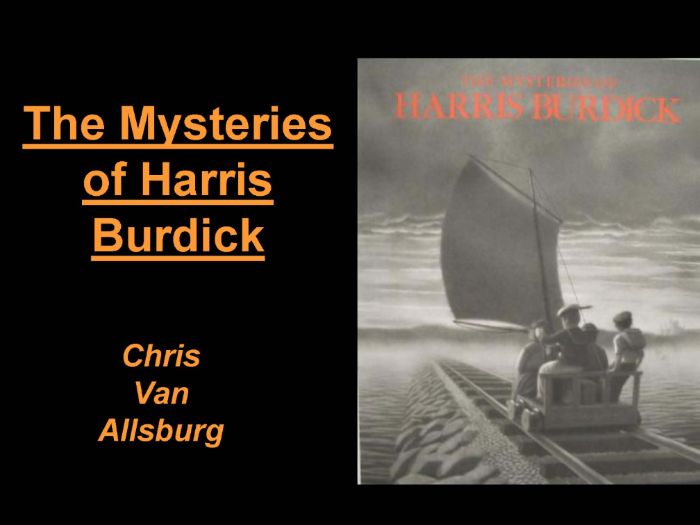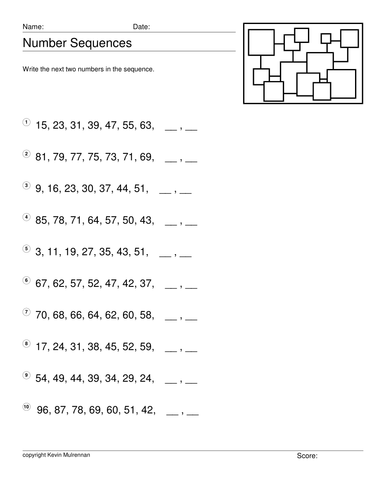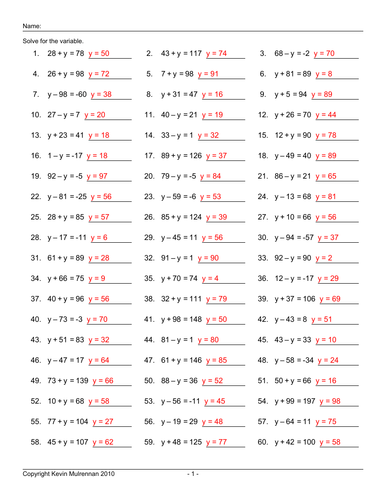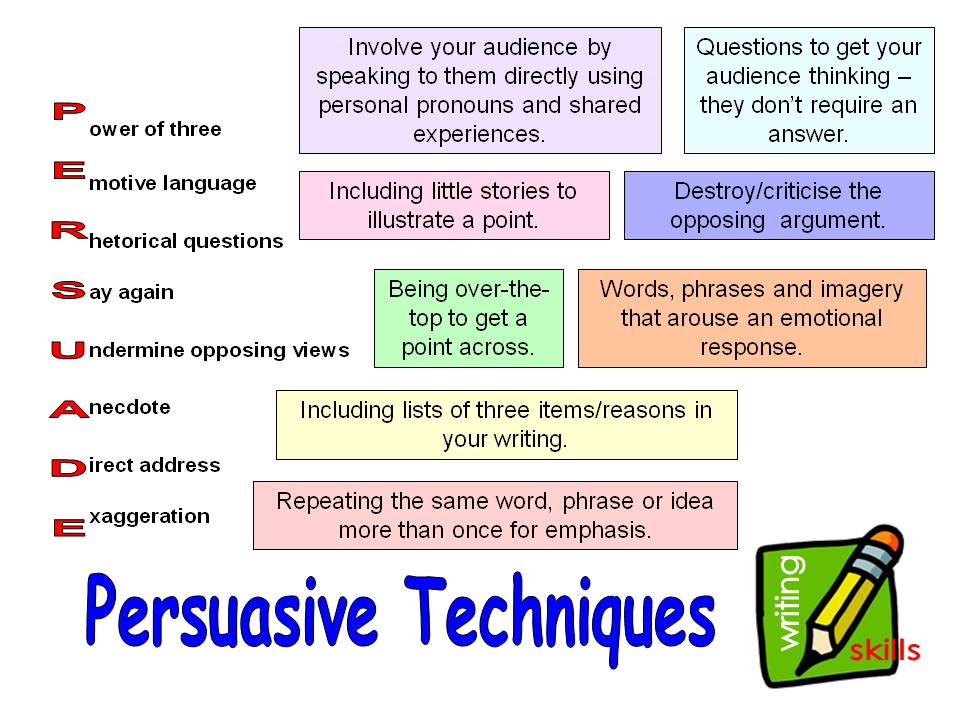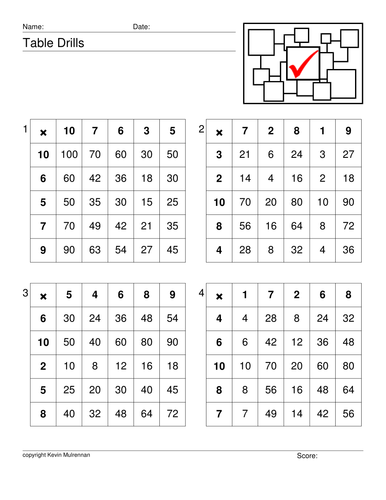348Uploads
100k+Views
30k+Downloads

Year 5 Literacy Planning Autumn Term KS2 Greek Myths Big Write
This is a zip file containing Literacy planning for a year 5 class (Autumn term)
It consists of 14 short term plans I designed. There is one Literacy lesson per day.
You will get 14 Microsoft Word documents. They are based on the Greek myths.
I’ve also included for free some extra teaching materials that you can use. I’ve included too 3 medium term plans , one for each term). These cover plans and ideas not just for Literacy, but other subjects as well.
I’ve also included an extra week from the next term. Feel free to use it to plug any gaps.
This will help you do your own planning. Feel free to cut and paste into your own school’s plans.
Ideal for someone who had to do a term’s supply like I had to do.
Please bear in mind:
every school is different. My plans assume you have the aide of a TA, but this is not essential. There is no differentiation in the planning. Everyone does the same thing to the best of their ability.
you may want to add your own detail. These are short term plans remember.
I have used walts and wilts. Your school may do something different.
A very few number of weeks have a small gaps for things like tests and inset days. Use the extra week one planning for the next term (included for free) if you wish.

Poetry year 4 Two Weeks of Planning Magic Box Kit wright Material
Two weeks Planning. the powerpoint is a sample. There’s other files in the planning
Great powerpoint on the work of Kit Wright.
The magic box really inspires kids.
Sampl planning Ask children to remind you about what a simile is and discuss why it is effective to use when writing. Explain that today we will be creating some poems of our own by creating some similes. Write ‘as thin as’ on the board and ask everyone to think of very thin things. Push children to think harder past the more obvious objects. Prompt them if necessary ‘what part of an animal is very thin?’ and so on. Write other prompts such as ‘as tall as, as large as, as hot as’. Draw some circles on the board and write a prompt above them ‘The sun is like…’ See how many other things they can think of that are round like the Sun. Turn the circles into objects they suggest. Now encourage children to extend their ideas further.
Explain that today children will be making some simile poems of their own about a monster. List some features of a monster and some adjectives that describe a monster.
HA work alone to create a simile poem about a monster.
MA supported by KB, use a writing skeleton for their poem which has some features already listed.
LA supported by AS, use a writing skeleton for their poem which has the features already listed, make a list of adjectives that might describe a monster.
Read through some of children’s poems together. Discuss what similes they have used and the effect it has on their writing, why is it more effective?
Can children compare objects?
Can they use adjectives?
Can they extend their own ideas and thinking?
Can they choose effective similes?

Literacy Year 5 or 6 Stories from Other Countries 3 Weeks Planning Ahmed's Secret Heide
Great planning for year 5.
Plenty to keep you going for three solid weeks.
Powerpoints, planning, worksheets etc etc
The zip has the lot. I have put up some on the ordinary download so you can look.
Sample planning :
Genre: Narrative Unit 3 – ‘Stories from other cultures’
Focus Texts: ‘Abela’ by Berlie Doherty (class reader), ‘The day of Ahmed’s secret’ by Florence Parry Heide, ‘Stories from around the world’ Usborne books.
Objectives
Primary Framework Phase 1
• Create roles showing how behaviour can be interpreted from different viewpoints
• Know and apply common spelling rules
• Infer writers’ perspectives from what is written and from what is implied
• Compare different types of narrative and information texts and identify how they are structured
• Experiment with different narrative form and styles to write their own stories
Adapt sentence construction to different text-types, purposes and readers
Punctuate sentences accurately, including using speech marks and apostrophes.
Learning/Writing outcome for unit: Write a story from a different character’s point of view. Reflect on writing critically and edit it against success criteria.
LO: Whole Class Shared Learning
Guided and Independent Activities: Plenary:
M Understand and use the word ‘culture’.
Begin to recognise the features of a story from another culture. Show the words ‘narrative’ and ‘fiction’. Children to TTYP and talk about what they mean. Come back together and elicit that they are words for ‘story’. We are going to be studying a narrative unit for two weeks. Briefly recap the five structural features of a story. What types of stories have we studied so far? (Myths, legends and stories by a significant author).
Show the word ‘culture’. Children to TTYP and discuss.
Come back together and explain that a culture refers to “the attitudes and behaviour that are characteristic of a particular social group.” Emphasise that we are not necessarily talking about different religions or even other countries – there are a lot of different cultures even within one country.
Lead to class discussion.
Provide children with copies of ‘The Day of Ahmed’s Secret’ – explain that this story is from Africa. Ahmed lives in a city called Cairo – the capital of Egypt. Show on a map. Have we heard anything about Cairo in the news recently?
Read half of the story and then challenge children to discuss on their tables:
The features of the story.
Their predictions about Ahmed’s secret.
Come back together, read the rest of the story and discuss.
How is Ahmed’s life different from your lives? In his culture it is perfectly normal for children to be working very hard and taking over the family business from his Father. What does his pride at being able to write his own name suggest about his level of education? About his place in society?
Create a working wall list of features to include:
Capital letters used at the start of each sentence and full stops at the end.

Year 5 Poetry Planning Poetic Style – Valerie Bloom/Pie Corbett
Nice planning :
sample :
Read 3/4 Pie Corbett poems (see list below this plan or plan resources) – NOT Wings. Discuss the poems read eg which one did you like best and why? Is anything similar about the poems? Focus their attention onto things that are typical of Pie Corbett. Use 3 headings: Subject matter/Style of poem/Language. Discuss each of these (subject matter is what the poem is about eg nature, travelling, observations etc). Style is free verse or strict rhythm/regular or irregular rhyming patterns, use of speech or dialogue etc. Language refers to the vocabulary – the use of adjectives and descriptions, metaphors or similes eg ”I heard the paving slabs groan as they muscled for space.” (See plan resources.) Start looking at poems of Pie Corbett under these 3 headings. Give chn time to talk in pairs/small groups about each heading and take feedback. Ask chn to come up and scribe some ideas under each heading. Explain that we will now be exploring some of these headings in more detail. Easy
Give chn a selection of Pie Corbett poems. Model reading a couple to the chn. Discuss what was similar or different in terms of the subject matter. Chn to then read some more poems in pairs and start to sort them into groups that are similar and why. Stick the similar poems onto A3 paper and make rough jottings about why they are similar. TD Medium/Hard
Work in pairs or 3s. Take turns to pick a Pie Corbett poem and read it out loud to rest of group. Repeat this until lots of poems have been read. Provide highlighting pens & poetry checklist (plan resources) to guide their discussion. Ask chn to go back over each poem carefully & highlight any language that makes the poem interesting eg adjectives & descriptions. Give chn the metaphor & simile example sheet (plan resources) to refer to and see if they can highlight any of these in another colour. Make sure chn annotate their highlighting with their own comments. Is there anything linking these Pie Corbett poems together? Does he repeat any language techniques? Finally they look at the style of the poems. Is there a regular rhythm in the poems? Do they use speech?

Back To School Kensuke's Kingdom Year 4 to 6 Planning and worksheets
I’m now retired from teaching after decades in the classroom.
I’d like to help the younger generation.
One aspect I don’t miss in Sundays. Trying to fill in planning grids that were rarely used or looked at. What a nightmare!
So I’ve put together my teaching plans etc from the various schools I was in.
The zip contains loads. I’ve put a sample in the ordinary download to give you a flavour
It’s mainly to do with Kensuke’s Kingdom. But there’s othet stuff too included for free. There’s stuff on Dolphin Boy, Butterfly boy etc.
Feel free to adapt for your planning grid.
Sample planning :
Recount one event from holiday. Note features and language patterns to list.
Chronological, time connectives, 1st person, past tense, personal views. Write a recount for the Easter holiday. Individual revision task. Focus on organization and links using temporal connective phrases. Personal views.
Introduce ch 1 for Kensuke’s Kingdom. Record initial response with prediction. Select examples to show Michael’s feelings. List reasons for and against yourself and family setting off on a round the world sail, Justify relating to evidence selected from the text.
Red: format provided
Gr/Or: list reasons from two places
Bl/Y: form contrasting sentences… begin with, “even though…”
Read ch 2. In pairs. How does Mom feel about the trip and Dad’s ideas? What is the alternative? 1. Why has Michael decided now to tell his story?
2. Who are the members of Michael’s family?
3. What do the family do together on the weekends? Can you describe how it makes them feel?
4. Why do the family stop sailing?
5. What is the atmosphere like in the house?
6. What happened to Michael’s best friend?
7. What happens to Michael’s father and why?
8. What do you think happens next?
9. Describe the father when they meet up again. What sort of mood is he in?
Read chapter three. List examples of each character’s feelings. How do Mom and Dad’s feelings compare.
When Michael and his family first set sail, how many miles a day do they want to do?
How many miles a day do they actually do?
What game do Michael’s parents play?
What do they eat?
What creatures do they see off the coast of Africa?
In November they went to Brazil. Where did they stop?
What did Michael do in Brazil?
What did they do on Christmas Day?
Describe, in your own words, the incident with Stella Artois. Record the incident with Stella as a personal diary entry.
Refer to events in the chapter.
HA: personal style to include worries for the future.
MA: Organise into paragraphs with links
LA: use ed-ing-ly openers.
You get 8.7 mb of stuff so that’s good value imo. In it are lesson plans, powerpoints, questions etc.
Enjoy your Sundays!

English year 5 and 6 The Mysteries of Harris Burdick Planning and Powerpoints Literacy year 5
A great collection for teaching this interesting topic.
You get powerpoints and planning.
Sample :
Punctuate sentences accurately, including using speech marks and apostrophes.
Use commas to mark clauses.
Group and classify words according to their type and meaning.
Read a variety of texts, commenting on the author’s choice of vocabulary.
Construct sentences which are punctuated correctly; including the use of commas, speech marks and apostrophes.
Use a range of connectives to join sentences.
Experiment with complex sentences.
Whole Class Shared Learning
Discuss pronouns (homework)
Define each type of word: Noun, adjective, verb and adverb. Build up a sentence as we go.
Show the children a picture on the whiteboard of a horse galloping and of a lightning bolt. Children to write down 3 (LA) or 5(MA and HA) important nouns from the picture. Share. On the left of the noun, children to write an adjective to modify or describe the noun. Share. After the noun, children to write a verb and then an adverb to qualify the verb.
e.g. The black horse galloped elegantly along the beach.
Praise the children on yesterday’s literacy work – they showed knowledge of the function of nouns, adjectives, verbs and adverbs (HA showed knowledge of the difference between common, proper and pro nouns).
Children to name a range of punctuation – I record on the board (I do not add to it at this point).
Ask volunteers to illustrate uses of the punctuation named. Look on the punctuation pyramid – have we named any L5 punctuation? This is what we should be aiming at all the time.
Children to have a variety of sentences to up level punctuation on their whiteboards.
Come back to ‘The Mysteries of Harris Burdick’. Read through all of the captions and talk about ‘reading’ the illustration. Allow children time to talk about the ‘mystery’ – what do they think happened to Harris Burdick?
Choose a picture from ‘The Mysteries…’ and list all of the questions which it provokes. What do children think of the pictures? Do the captions answer any of the questions?
Talk about the settings in the pictures – often they are recognisable, familiar settings where things are not as they seem. Explain that we would call this ‘Stories in a familiar setting’.
Model the task.
Use PPT to study speech punctuation.
Use the pictures from ‘The Mysteries…’ to write some possible dialogue.
Model possible conversations, including synonyms for said and adverbs plus adverbial clauses. With correct punctuation.
Look at some of the pictures from ‘The Mysteries …’
Think / discuss some of the characters in the pictures. Use adjectives to describe them – give them names. From the pictures come up with verbs to describe what they are doing then add adverbs and adverbial clauses.

Teaching Resources 100 worksheets Coins KS1 Teachers Counting KS1 KS2
I have designed 100 worksheets on coins for primary school children. I have used a variety of coins, a variety of difficulty and a variety of numbers of questions per sheet. Pupils write on the sheets how much it all adds up to. Answer sheets are provided for all worksheets.

1000 Questions on Shopping KS2 Mathematics Money Calculator Use
1000 questions on shopping.
Answers provided.
Pupils have to work out the cost of various food items.
Lots of variations.
Would be good as a homework or calculator use.

Fables Myths Legends planning Powerpoints Literacy Pandora Robin Hood Greek Myth
Three weeks of plans.
You get powerpoints.
Looks at myths particularly Pandora and robin Hood.
You get plenty of resources including over a dozen word files.

Years 1 to 4 Complete Year's Religious Studies R.E. Planning
For all years 1 to 4 complete planning all terms.
Easily adaptable up or down, so will save you hours.
Catholic in flavour but other religions included.
Contains powerpoints, planning, worksheets, info etc.
Why not look at the bundles. Incredible value and it’ll save your precious Sundays.
Ideal if you have been chosen to deliver R.E.
N.B. You will need to spend some time organising as I am retired. Also not a great deal of year 2 stuff. If you want superorganised stuff, please look at my RE powerpoint stuff,
sample planning :
Learning and growing as the People of God:
Short-term Planning Unit I – Easter
Most children will know that the four Gospels contain accounts of the Resurrection of Christ. They will be able to understand the transforming effect this had upon the disciples. The children will know that the Ascension reminds Christians of the promise of Christ to remain always with them.
Less able children will be able to recall parts of the Resurrection story from some of the Gospels.
More able children will have a greater understanding of the importance of the Resurrection for Christians today and of their belief in the presence of Christ in the Church and in their lives.
Start date: Finish Date
Additional details including groupings, differentiation Vocabulary and
Key Questions Resources Prayer
Revise with children previous learning about the Church’s celebration of Easter.
Recall that it is a season of fifty days and revise some of the colours and symbols of the season that are used in the Church’s liturgy.
Activity:
In groups - give children the colours and the symbols to match.
White Easter light
innocence
purity
joy
triumph
glory
Red Feasts of the Lord’s Passion, Blood and Cross the Passion
blood
fire
God’s Love
martyrdom
Palm Sunday
Purple Good Friday penance
humility
melancholy
Gold Easter joy
Children to read one of the four Gospel accounts of the Resurrection:
Matthew 28: 1-15, Mark 16: 1-17, Luke 24: 1-43, John 20: 1-21
Group Activity:
Must - Highlight the words and actions of the disciples and the women and the words and actions of Jesus.
Should/Could -Create a resurrection appearance table. Include in the headings: What the disciples were doing, what they saw, and what Jesus said and did.
(Use the above Gospel accounts to fill in the table).
Plenary:
Children to imagine that they are about to meet somebody who had never heard of Jesus before. What would they tell this person about the resurrection? What would be the most important information that they would need to pass on?
What were the words and actions of ____ at the resurrection of Christ?
Markers Remind the children that prayer time is an
important opportunity for us to recognise
the presence of Jesus in our lives.
Provide moments for silent prayer. Use
music and appropriate Easter focus,
Use the Resurrection and Ascension
stories during Collective Worship.
Other links/Homework

Back to School The Piano by Aidan Gibbons Year 6 Literacy Planning
Great planning and powerpoints on this fascinating topic.
sample :
Speaking
• Tell a story using notes designed to cue techniques such as repetition, recap and humour
Drama
• Reflect on how working in role helps to explore complex issues
Understanding and interpreting texts
• Infer writers’ perspectives from what is written and from what is implied
• Compare different types of narrative and information texts and identify how they are structured
Creating and shaping texts
• Reflect independently and critically on their own writing and edit and improve it
• Experiment with different narrative forms and styles to write their own stories
Sentence structure and punctuation
• Adapt sentence construction to different text-types, purposes and readers
• Punctuate sentences accurately, including using speech marks and apostrophes
Understand, analyse and compare several ‘visual texts’.
Comment on the technical parts of a visual text.
Write a review using correct format and language.
Whole Class Shared Learning
Guided and Independent Activities:
Start to understand what is meant by a ‘visual text’. What do we know so far about narrative writing? Create a list of facts to add to working wall including: fictional, dialogue, opening etc.
Explain to the children briefly, that they are going to watch a short, animated film, entitled ‘The Piano.’ Explain also that there is no dialogue or narration; it will be up to the children to decide what the film is about, to answer simple questions, raise some of their own and provide their own explanations for what they see.
Tell the children that they’re going to watch the film, quietly and without comment at first. Then, watch ‘The Piano’ by Aidan Gibbons.
Model completing thinking feeling and speech shapes linked to the narrative.

Flashback Story Planning Year 6 Late Again For School Powerpoints Worksheets
Great planning.
sample :
Key Questions Teaching
Show the children the PowerPoint ® about different sentence types.
Ask the children to give some examples of sentence types that we use in own writing.
Remind the children of the BOYS and 2A sentences. Write suggestions down. Ask could we extend these sentences, giving more detail?
Model how we might come up with a simple sentence – ‘I walked into school’ – and add another simple sentence to give more detail.
Tell pupils this week we will be focusing on flashback stories. Ask children what does it mean to flashback?
Ask pupils if they can recall the main stages of a narrative. Put up mixed words on board.
Can pupils recall the order?
Opening
Build up
Dilemma
Events
Resolution
End
Tell pupils effective flashback stories often open in the middle of action. This week we will focus on how to write an effective flash back opening.
First we are going to explore a possible story plot. Today’s lesson we are going to look at a picture still and pupils are going to work in pairs to work out what is happening / happened.
What does it mean to flashback? How should a narrative be structured? Why is this a good structure?
Tell pupils there are two ways to start an effective flashback story opening. We can use a 3-ed sentence or an If… If… If… sentence.
This week we are going to explore 3-ed sentences.
The technique we are going to use is called the Cliff hanger 3-ed sentence.
First part of our lesson we are going to look at just the 3- ed sentence. Explain to the pupils, -ed sentences describe a characters emotion/feelings.
The sentence starts with 3 adjectives which end in –ed.
Eg. Frightened, confused, amused.
Show another still picture from ‘Holes’. (see slide 2 of PPT). Ask children to write as many adjectives ending in ‘ed’ as they can think of to describe the scene.
Together, use these adjective and come up with a 3-ed sentences to describe this scene.
E.g. Disgusted, puzzled, repulsed, he held the shoes away from his nose.
Children now to generate their own using the words.
Now show slide 3. Children to generate 3-ed sentences.
Which words best describe the image? Why?
Which sentence is the most effective? Why? Would changing the order of the adjectives make it sound better/worse? Why?

Number Sequences Maths 100 Worksheets with Answers
100 worksheets.
100 answer sheets.
At least 10 questions per sheet.
Pupils have to enter the next two numbers in the sequence.
They get harder so that later sheets include decimals and 20 questions per sheet.

Freebie Free 5 Worksheets Maths Shopping Arithmetic KS1 KS2 Money Counting
A freebie.
If you like these I have 100 for sale in my shop.
I have designed 5 worksheets on Money and Shopping for primary school children. I have used a variety of items, a variety of difficulty and a variety of numbers of questions per sheet. Pupils write on the sheets the total cost. e.g. a milkshake costs £2.90 a hot dog £1.65 How much would 2 milkshakes and 3 hotdogs cost? There is plenty there to reinforce the work done in the classroom. Good for extra homework or additional work for the bright ones. Answer sheets are provided for all worksheets.

1000 questions Equations Single Variable Mathematics KS2 Algebra
1000 questions with answers on Equations.
Single variables.
Pupils have to work out what y equals.

Year 6 Literacy Revision Autobiography Explanation Texts The Shirt Machine
Nice Summer planning for year 6.
Focuses on the Shirt Machine.
Plenty of planning and powerpoints etc.

Great Year 5 English Literacy Christmas Planning Alternative Christmas
This is some great planning for Christmas for Year 5 Literacy.
I found the kids loved it.
Advantages for you: kids are interested, it’s non religious so can be shown to everyone, you can watch the lovely short movie umpteen times so takes the strain off you.
It’s based on a great little movie, voiced by the late great John Hurt.
It will fill up the last two to three weeks nicely.
Plus there’s non literacy planning for free.
Some example planning :
To analyse and create a character and setting description for 23 Degrees 5 Minutes North.
I can express verbally what a character may be feeling, thinking or doing
I can explain why I think a character may feel, think or do something
I can describe a setting using figurative language
Starter 5 mins
Pen portrait of key characters in 23 Degrees 5 Minutes North: Children mind map/annotate information about the key characters that they know so far around an image of The Adventurer and Professor Erit. They add information about the internal feelings, thoughts and emotions within and the external information such as physical description, or known facts
Activity 1 5-10 mins
Use key questions and discussion in groups to think about answers to questions such as: Why am I here? Will I be able to find Professor Erit? Emphasise the importance of chn giving evidence to support their opinion when they give a response to these questions.
Activity 10 mins
Return to image of the Adventurer and Professor Erit. Using a different coloured pencil, chn should add information about these characters
Main 20 mins
Give chn an image of the setting and ask them to mind-map descriptive words, phrases or sentences they could use to describe the narrative setting.
Model using the different kinds of sentence-types to record a setting description, using the vocabulary recorder in the mind-map. Chn use sentences to build suspense if they can.
Plenary 5 – 10 mins
Chn share their comments about the Adventurer and Professor Erit with the class.
Chn to explain what they have now learnt about each character - using their skills of inference. Share best sentences to describe setting.
Take a moment to add any extra information after the class discussion to their own work, using another coloured pencil.

Persuasive Writing Lots of Planning Powerpoints Worksheets English
Happily retired, decided to put together my Persuasive writing planning from my various schools.
there’s a mass of stuff!
Save yourself a shedload of time and enjoy your Sundays!
Plenty of great powerpoints.
From different years but concentrating on years 3 to 6.
example planning :
Main teaching:
Explain that we are now looking at another text under the umbrella of persuasive texts.
Explain that we may sometimes need to write a letter to a person or organisation in order to put across our point of view and persuade them to take a course of action or come around to our point of view.
Revise what we need to include in a persuasive argument, explain that it is exactly the same in a letter but in a slightly different layout.
Read the example of a persuasive letter from page 17 of the L4 study guide.
Deconstruct and discuss. Elicit that the opening of the letter needs to be powerful and state the objective of the letter. Talk about the conclusion of the letter and how it also needs to be powerful.
Ensure that children understand the structure of a letter (addresses etc).
Activity 1
Bring children back together and draw up a list of good opening lines ‘I am writing to express my disgust’ etc.
Explain that, tomorrow, children will be writing their own persuasive letter.
Show them the title ‘TV adverts should be banned for junk foods’
Briefly discuss what is a ‘junk food’ and brainstorm reasons for not advertising them on TV.
Encourages obesity which leads to illnesses such as heart disease and diabetes.
Illnesses cost money (treatment on NHS) and days off work.
Junk food produces a lot of litter.
The packaging cannot be recycled.
If children have a bad diet their performance at school is affected. This adversely affects their education and future prospects.

Table Drills Mathematics Multiplication KS1 KS2 Maths Freebie Free
If you like this resource more available in my shop.
Fill in the gaps to get the correct multiplication answer.

Free Freebie Good Samaritan Lesson Simple and Effective for Year 4 R.E. Literacy
Got me a job so must be reasonable!
A simple lesson plan, worksheet, powerpoint.
Great for discusiing with pupils.
I have plenty of maths, literacy, languages and Literacy stuff so have a look after downloading this freebie.

